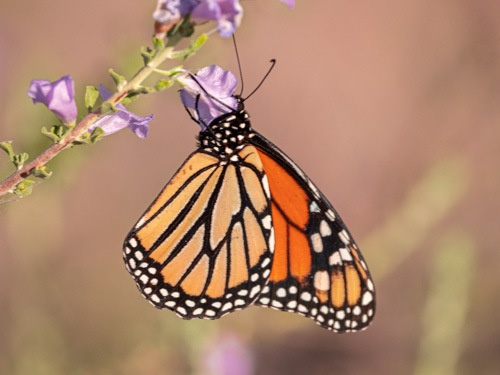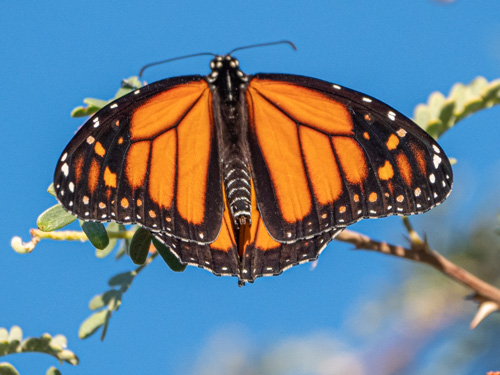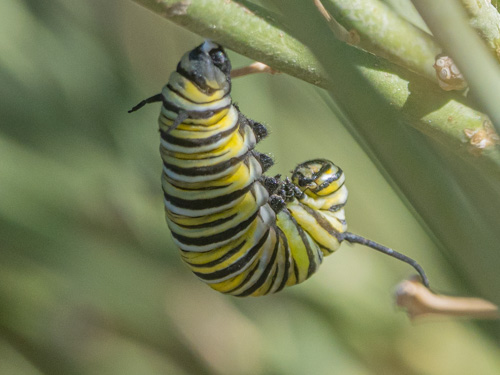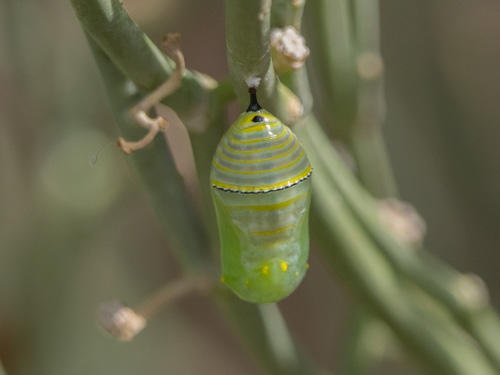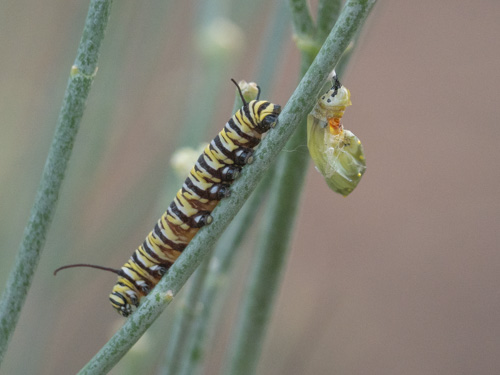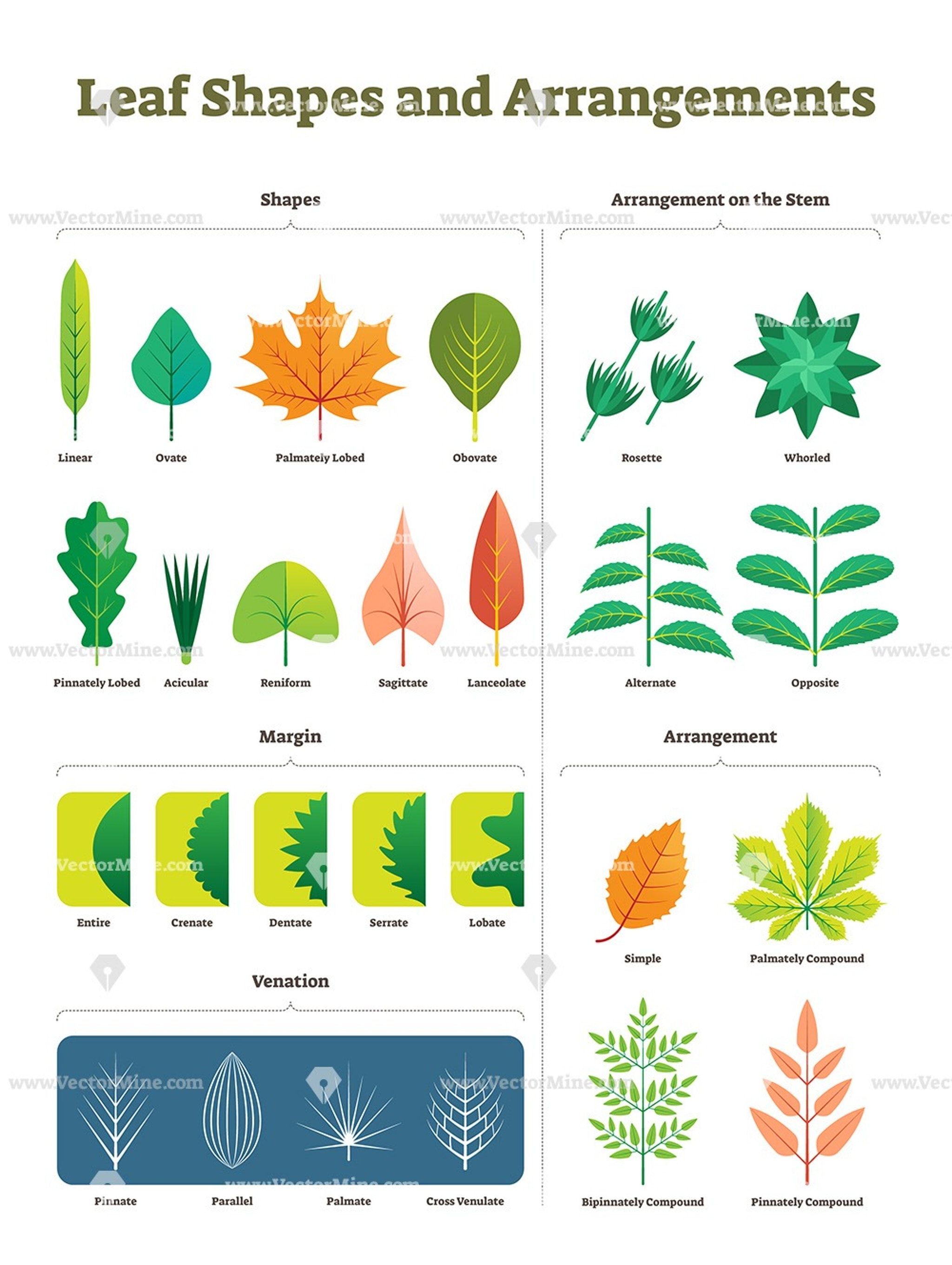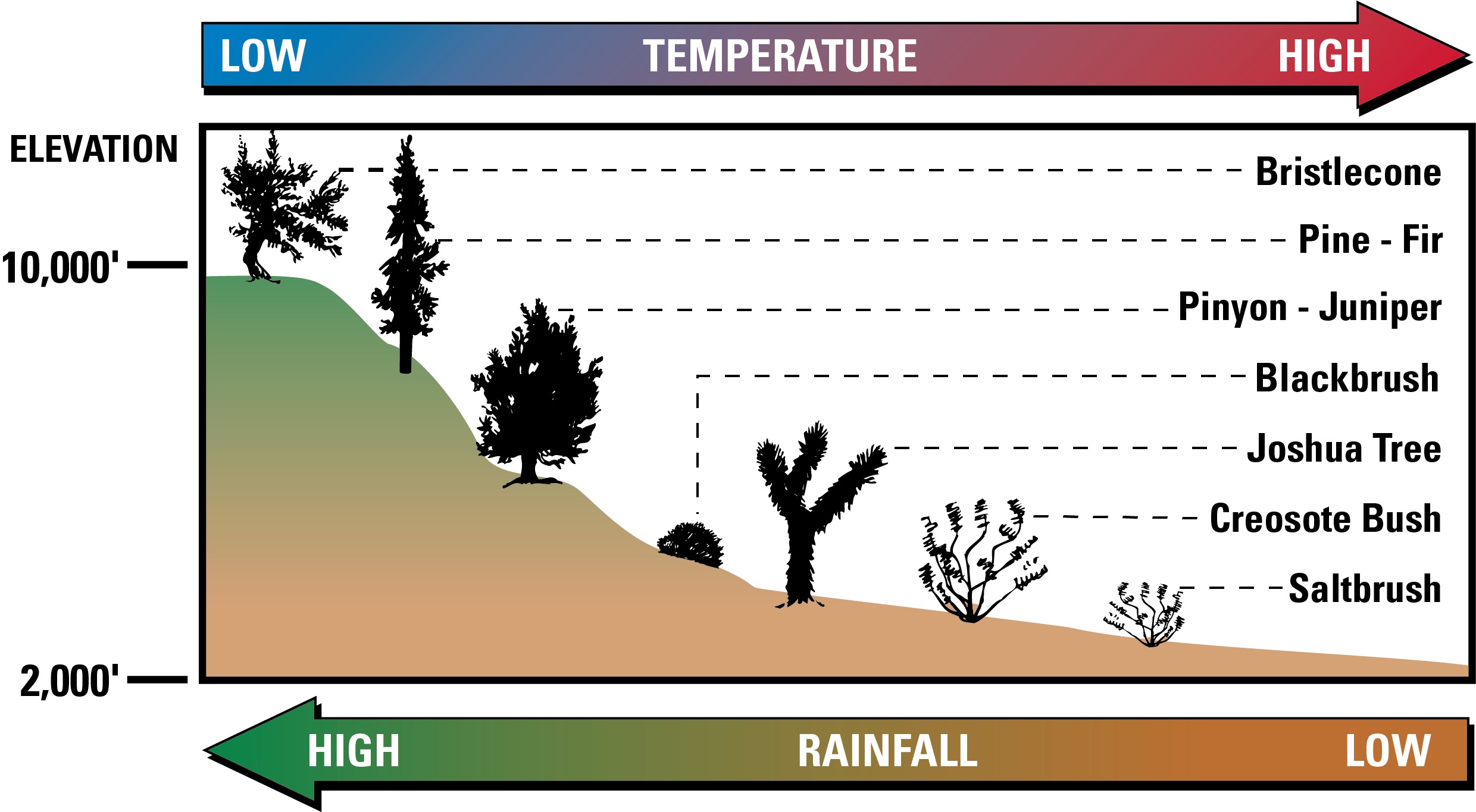Danaus plexippus
Monarch Butterfly
Introduction:
Monarchs obtain moisture and minerals from damp soil and wet gravel, a behavior known as mud-puddling. Adult monarch butterflies possess two pairs of brilliant orange-red wings, featuring black veins and white spots along the edges. Males, who possess distinguishing black dots along the veins of their wings, are slightly bigger than females. Each adult butterfly lives only about four to five weeks. Milkweed is the only plant on which monarchs will lay their eggs and the only source of food for baby caterpillars. But urban planning and agricultural expansion have paved and plowed over millions of acres of milkweed.
Life Cycle: The western North American population of monarchs west of the Rocky Mountains often migrates to sites in southern California, but have been found in overwintering Mexican sites, as well. Non-migratory populations are found further south in the Americas, and in parts of Europe, Oceania, and Southeast Asia.
Size 3.5 to 4 inches (9 to 10 cm)
Sexual Dimorphism: false
Metamorphosis: complete (egg, larva, pupa, adult)
